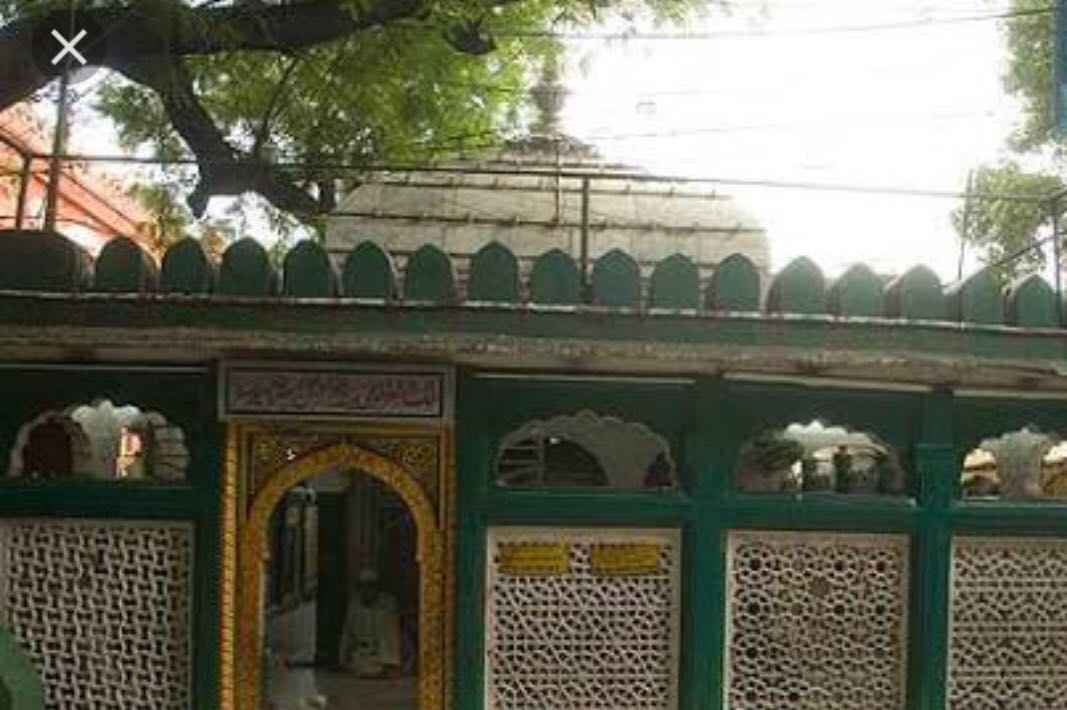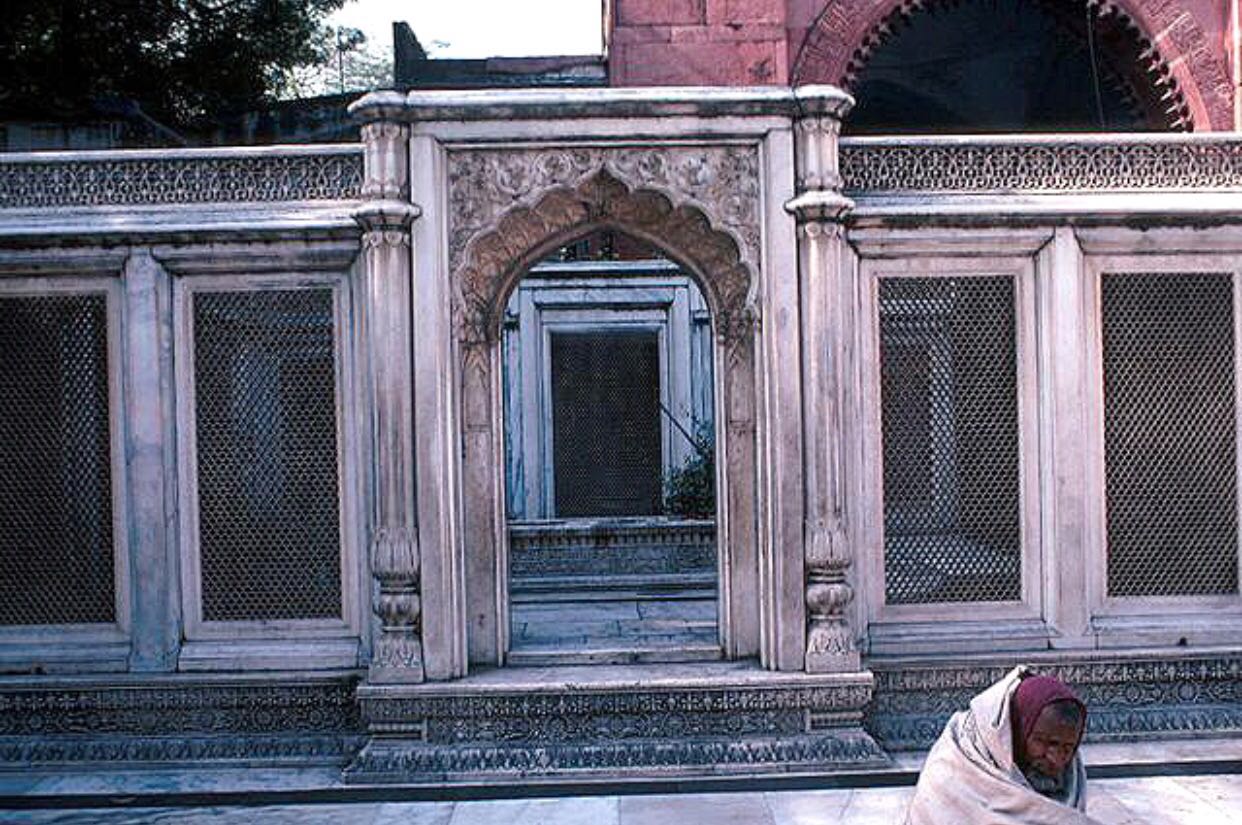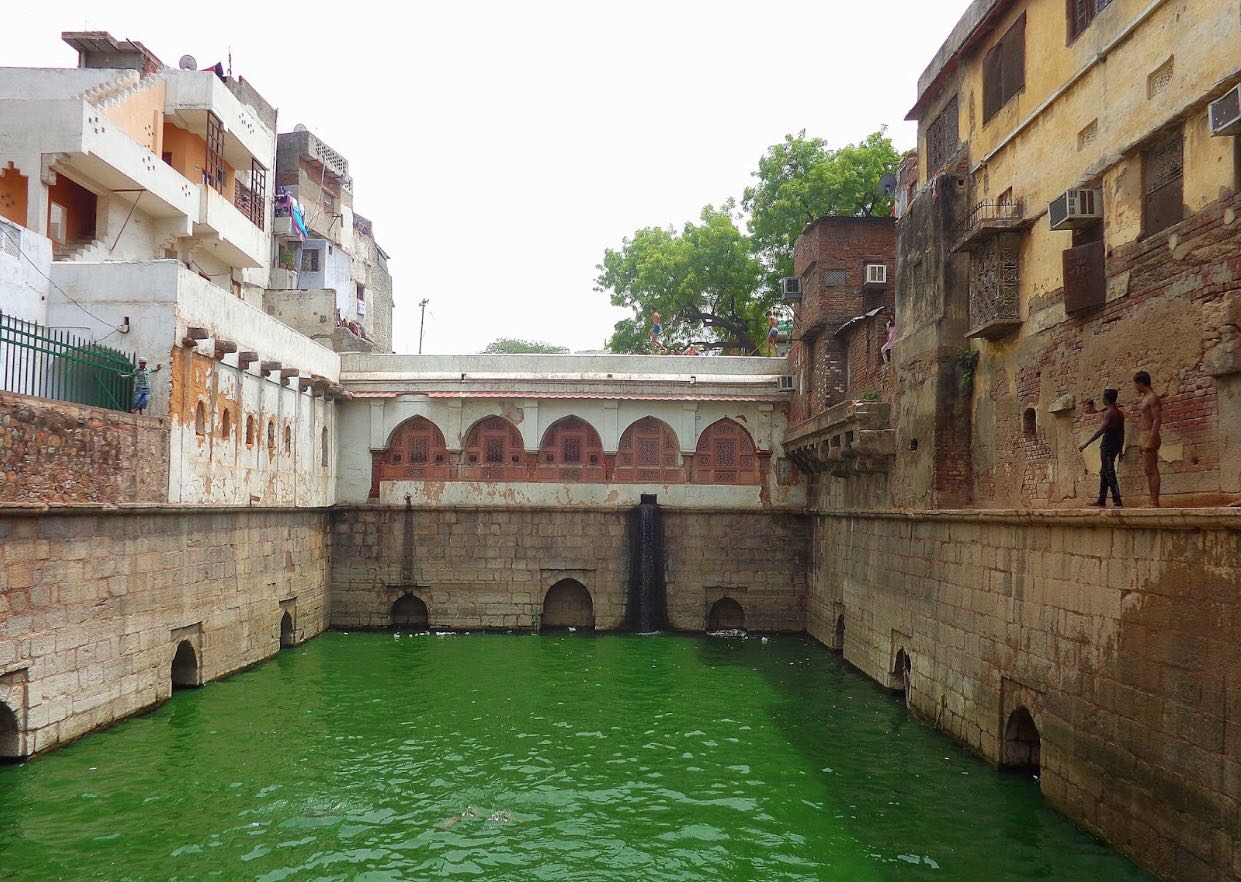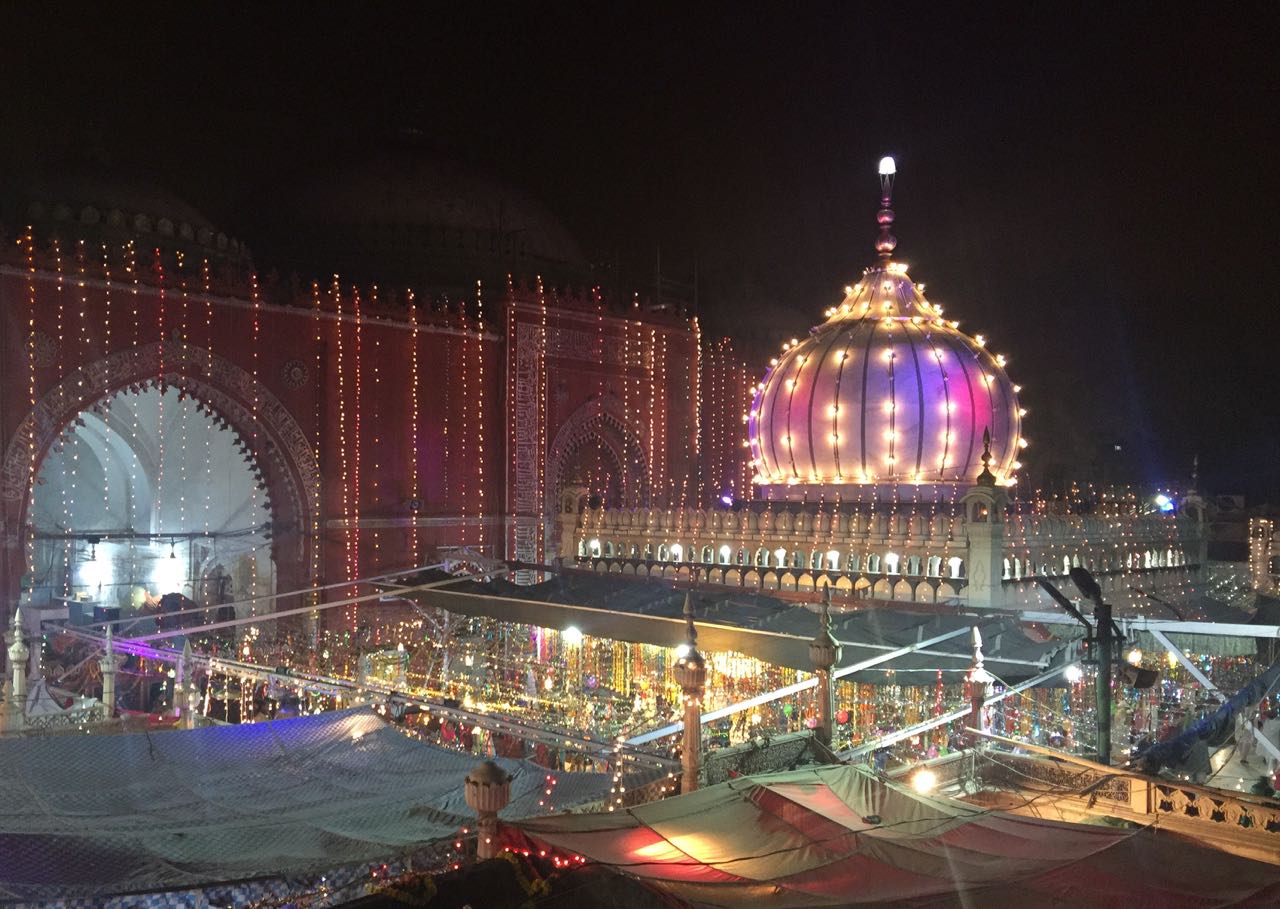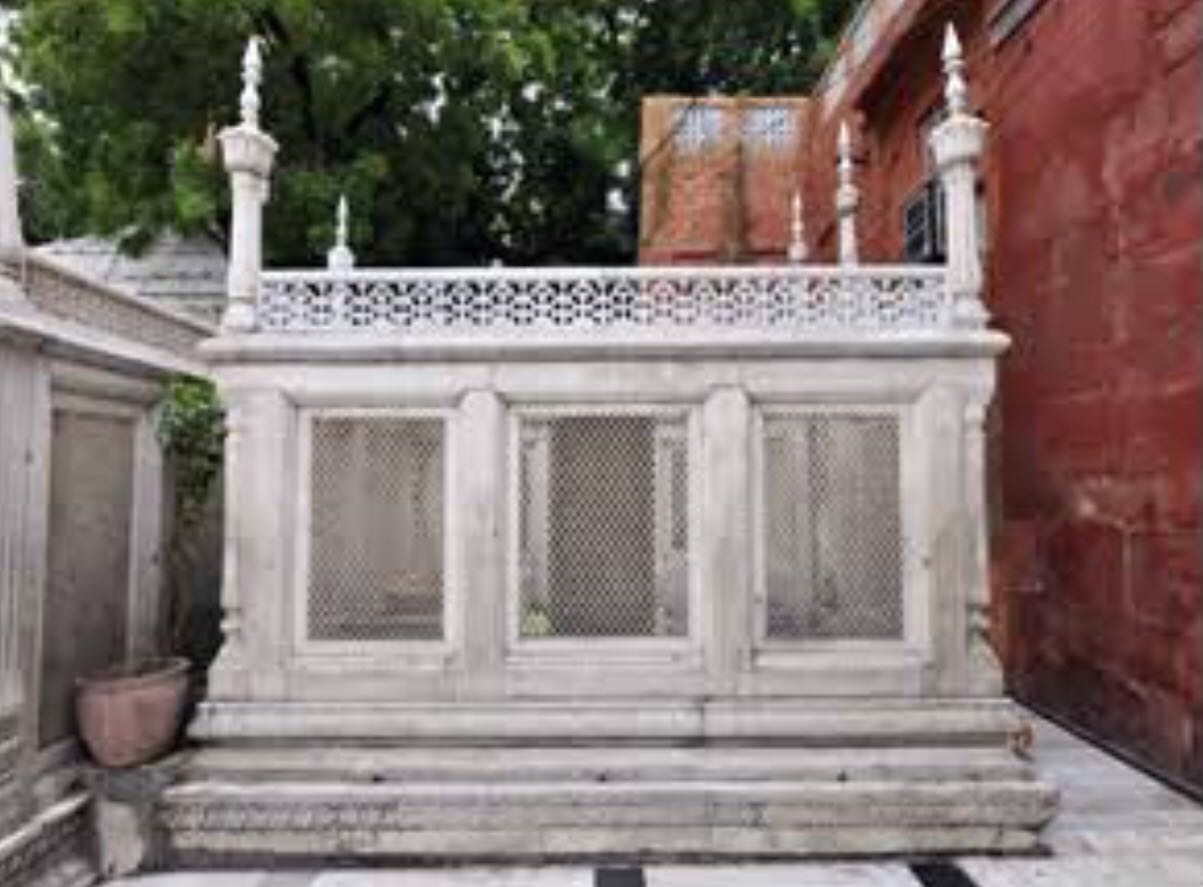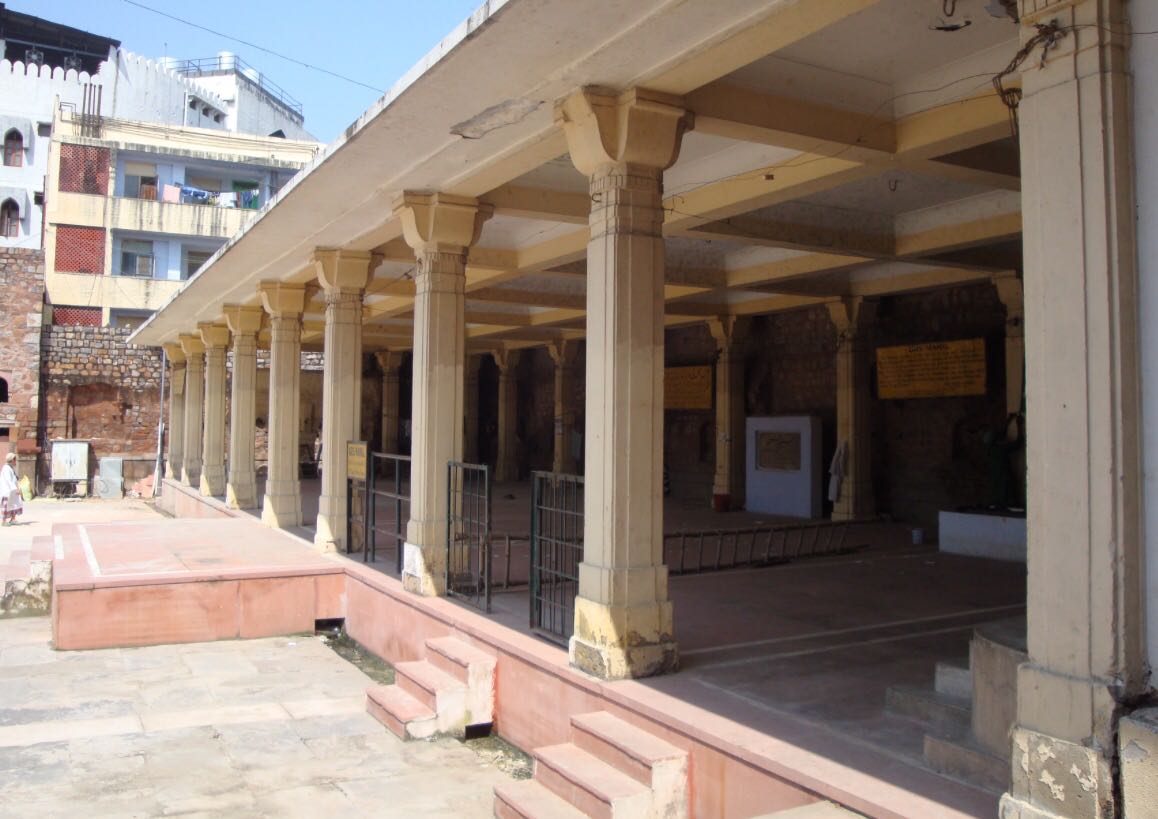Dargah Hazrat Amir Khusro
Tomb of Hazrat Amir Khusro:
Adjacent
to the Mohammed Shah’s Tomb towards the South, is the tomb of Hzt. Amir
Khusro. Different additions and
alterations were made in different periods at the tomb of Hzt. Amir
Khusro. During the reign of Emperor
Babar, his brother in law Mahdi Khwaja erected the enclosing walls around the
grave.
Later on, in the reign of
Humayun, the inner enclosure was built and a marble tombstone was also placed
over the grave. Some additions were
again made in the reign of Akbar.
The present tomb was built during
the reign of Emperor Jahangir in 1605 AD (1014 Hijri) by Khwaja Imaduddinn
Hassan.The fact is well supported and authenticated by the inscriptions with
date and the name of its founder engraved on the walls inside the tomb.
To the south of the grave of Hzt.
Amir Khusro inside the enclosure is a grave of Hzt. Shamsuddin Mahiru, who was
Hzt. xAmir Khusro’s sister’s son. The
enclosure of Amir Khusro is measured about 28’6” by 20’6”.
Jamatkhana (Mosque)
Jamatkhana Mosque
The mosque is also known as
Khizri mosque. The common belief is that
this was built by Khizr Khan, the son of Alauddin Khilji and also a disciple of
Hazrat Nizamuddin Aulia.
It must be noted that it was the central dome
which was constructed by Prince Khizr Khan and the other two sides were added
to it later by Firozshah tughlaq.
This mosque is constructed of red
sandstone and contains three compartments which are inter connected. The arches of the mosque are beautifully
ornamented with Quranic inscreiptions.
Daily five time prayers is held here.
Rencentely Aga Khan Foundation has started its conservation work at this
mosque.
Mohd, Shah Tomb
Tomb of Mohammad Shah
Rangila:
Adjacent to the tomb of Jahanara,
towards the east is that of Emperor Mohammad Shah better known as Mohd Shah
Rangila. His real name was Roshan Akhtar
and he was the grandson of Bahadurshah I. The greatest event in his period was
the invasion of India by Nadir
Shah in 1739 AD and the massacre of Delhi which
is still remembered as the greatest calamity that had ever befallen the Delhi city. The other
graves inside the enclosure are of his wife Sahiba Mahal and his grandsons
Mirza Jigru and Mirza Ashuri.
Baoli
The first object of interest
while entering the Dargah from the eastern gate (Baoli Gate) is Baoli or water
reservoir. It was built by the Saint himself under the supervision of Hazrat
Nasiruddin Chiragh Dehlavi who was the Khalifa of the saint. It’s measurement
is 123” by 53” internally and it is enclosed by stone walls on the three sides
ie east, west and south. On the north of the Baoli are descending steps which
go to its depth into the well. At present there are about 20 steps above the
water level.
When the construction work of the
Baoli was started, Sultan Ghayasuddin Tughlaq also started his own construction
simultaneously in Tughlakabad and employed all the labor there in order to
obstruct the Baoli work of Hazrat Nizamuddin Aulia. As the laborers had great respect and
devotion for the saint, they decided to work for the Baoli during night. When the Sultan came to know this he issued
fresh orders to stop the supply of oil for the Baoli work which was needed for
lightening arrangements. The Saint than
directed Hazrat Nasiruddin to use the water from the Baoli as oil and the water
did burn like real oil and the Baoli work was completed in wonder. That was the time when Hazrat Nasiruddin got
the tiltle of Roshan Chiragh Delhi (Lamp of Delhi). At present there is a big
locality of this name in Delhi
i.e Chiragh Delhi.,
Dargah Hazrat Nizamuddin Aulia
Dargah Hazrat Nizamuddin Aulia
(History of the Tomb)
The tomb of Hazrat Nizamuddin
Aulia measuring about 32’ square externally is situated in the centre of the
enclosure of the Dargah. It includes the
verandah measuring 6’8” in width and having five arched openings on each side
with twenty marble pillars.
The
present structure of the tomb which we see today is the result of many
additions in different times. When
Hazrat Nizamuddin Aulia was buried, there existed nothing except the Jamatkhana
Mosque, which was built during the lifetime of the saint. It was Mohd. Shah Tughlaq who first erected a
cupola over his grave. It was ornamented
by his successor Firozshah who made the arches of the dome. It was rebuilt during the reign of Emperor
Akbar. In 970 Hijri (1526AD) the marble
slab was engraved at the head of the grave by Syed Faridun Khan.
The
Wooden Canopy (Chaparkhat) was raised over the grave by Nawab Farid Khan during
the reign of Emperor Jahangair in 1017 Hijri (1608 AD).
Beesdari or the Verandah was built by
Khalilullah Khan who was the governor of Delhi
during the reign of Shahjahan in 1063 Hijri (1652 AD). But at that time the pillars of the Verandah
were of red sandstone. Later on Hazrat
Kale Sahib, grandson of Hazrat Maulana Fakhar Pak bought the marble pillars to
replace the red sandstone pillars but he died and then the pillars were
replaced by Nawab Ahmed Bakhsh Khan of Firozpur Jhirka in 1808 AD. In 1822 AD Khursheed Jah of Hyderabad erected a marble Jaali around the grave.
Recently the golden work has been
carried on at the tomb of Hazrat Nizamuddin Aulia.
Tomb of Jahanara Begum
Tomb of Jahanara:
It is situated towads the south
of Hazrat Nizamuddin Aulia’s holy grave and adjacent to the south wing of Jamat
Khana mosque. It is a marble enclosure
open to the sky.
Jahanara, the daughter of emperor
Shahjahan and older sister of Aurangzeb was a great devotee of Hazrat
Nizamuddin Aulia and Hazat Moinuddin Chishti. She also wrote a biography of
Khwaja Moinuddin Chishti, titled “Munis ul Arwah’. She was a highly educated
lady and here favorite study was Sufism. She was given the titles of ‘Badshah
Begum’ (Lady Empress) and Begum Sahib (Princess of Princesses).
The following inscriptions are
written at the marble headstone of Jahanara’s grave which are said to have
written by the Princess herself.:
He is living and everlasting
Let no one cover my grave except with greenery,
for this grass suffices as a tomb cover for this poor.
The humble and mortal Jahanara disciple of Lords of Chisti,
Daughter of Shahjahan the warrior.( May God illuminate his
demonstrations).
To the east of Jahanara’s grave
is that of Mirza Nili, son of Shah Alam II and Jamalunnisa Begum, daughter of
Akbar II is buried to the west of the Princess.
Urs Mahal
Urs Mahal, situated in the
vicinity of Hzt. Nizamuddin Aulia is the only memorial of Hzt. Nizamuddin Aulia
and Hzt. Ameer Khusrau in India. Urs Mahal where the annual Urses of Hzt.
Nizamuddin Aulia and Hzt. Ameer Khusrau are celebrated, is a symbol of love,
affection and tribute of the Late Prime Minister of Jammu & Kashmir, Shri
Bakshi Ghulam Mohammad which he had for the great saint of India Hzt.
Nizamuddin Aulia.
The Urs Mahal was constructed by
His Holiness Hzt. Pir Zamin Nizami Syed Bokhari, Late Sajjadanashin of Dargah
Hzt. Nizamuddin Aulia under his own supervision and with the help of Pandit
Jawahar Lal Nehru, the first Prime Minister of India and Bakshi Ghulam Mohammad
as they had great respect of the Holy Saint.
It was inaugurated by Dr. Radha Krishnan (Former President of India)
in the presence of Pandit Jawahar Lal Nehru in 1962. Before the construction of the Urs Mahal the
Urs was celebrated at the same place under the tents and shamianas.
Vajpayee message:
